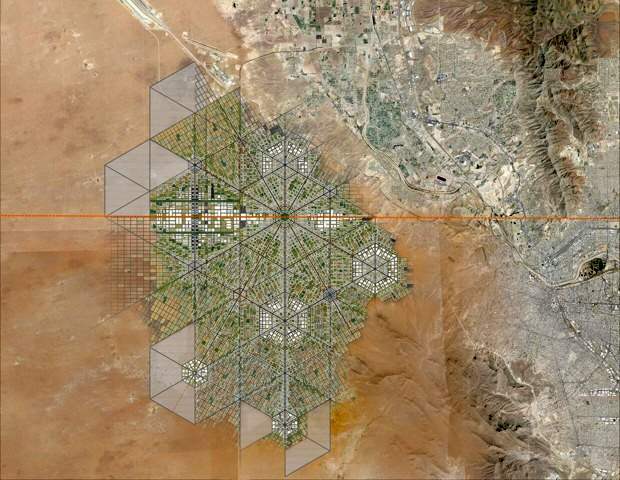This proposal sounds a lot more 21st century than Trump’s plan for a wall along the Mexico-U.S. border. Will either proposal ever actually happen? Most likely not. But that does not prevent us from considering the former project one more than worthy of mention here.
Young Mexican architect Fernando Romero has long believed that “building bridges” is preferable to creating obstacles and that conventional boundaries “are just becoming symbolic limits.”Romero was named a “Global Leader of Tomorrow” at the World Economic Forum in 2002.
To illustrate his viewpoint, Romero recently released a master plan for a walkable, super-connected metropolis straddling the U.S.-Mexico border. More than a decade ago, Romero’s architecture firm proposed a tunnel-like “Bridging Museum” crossing the Mexico-U.S. border in the Rio Grande Valley. His more recent suggestion of a utopian border city, presented at the London Design Biennale, is far more ambitious and would take advantage of the concept of special economic zones (employed earlier this year by Mexico’s federal government to stimulate development in several southern states).
To read more about this exciting proposal, with numerous stunning images of what it might look like, see “Instead of Trump’s Wall, Why Not a Binational Border City?“
For more about the U.S.-Mexico border zone, see these related Geo-Mexico posts:
- The Transnational Metropolitan Areas of Mexico-USA
- Cross-border tribe faces a tough future
- Mexico and US agree to work together to fight trans-border wildfires
- The curious history of Ambos Nogales, twin cities either side of the Mexico-USA border
- Meandering river leads to border dispute
- Mexicali receives more deportees than any other Mexican border city
- Two examples of Mexico-USA trans-border water pollution
- Two examples of trans-border air pollution on the Mexico-USA border

Sorry, the comment form is closed at this time.